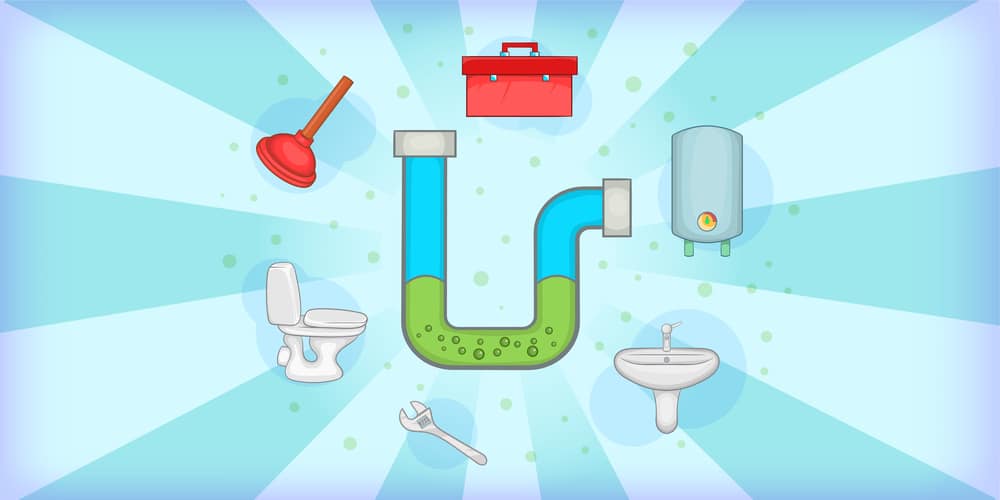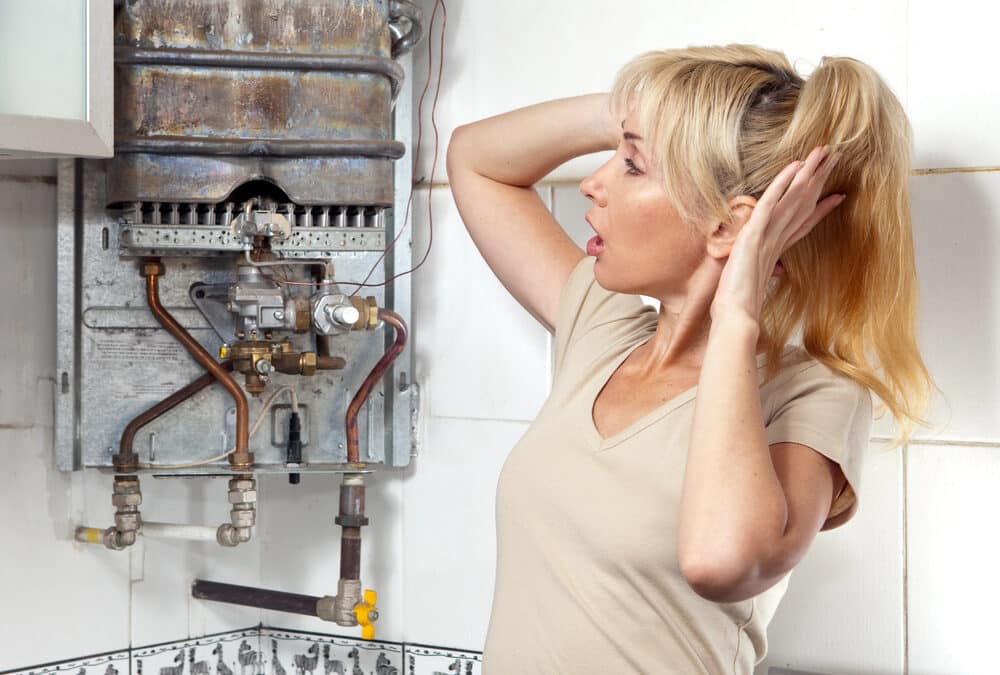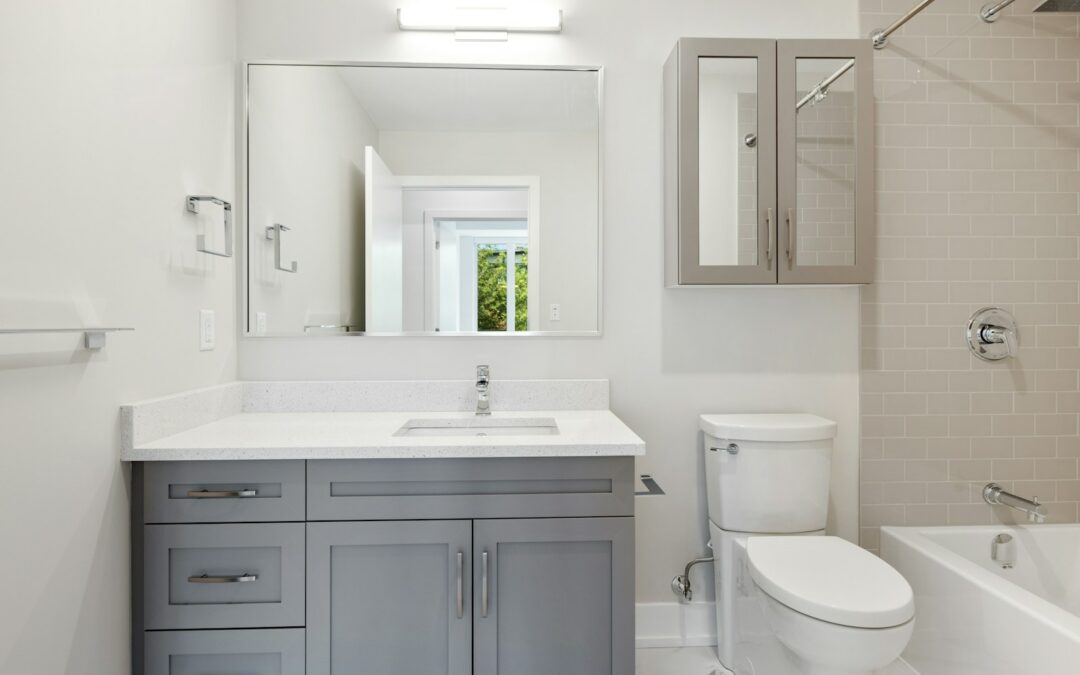Plumbing tape is an essential item for any do-it-yourself (DIY) plumbing project. It seals connections, preventing water from leaking and causing damage. It’s easy to use, but there are key points to remember to get the job done right.
This article will cover the basics of plumbing tape, when to use a plumbing tape, and how to use a plumbing tape correctly.
What Is Plumbing Tape?
A plumbing tape, plumber’s tape, thread tape or pipe tape is a thin, waterproof sealing tape that provides watertight connections in plumbing projects. It is typically made of plastic-based materials, such as polyethylene or PVC, and has an adhesive backing that allows it to stick firmly to the pipes. Different plumbing tapes are available, including PTFE (Teflon), reinforced, and colored tapes.
Schedule Service Online
Get a free estimate so you know what you're signing up for
"*" indicates required fields
For Emergency Services Call: 410-255-9300
When selecting a plumber’s tape for a project, choosing the right type for the application is important. For example, you should use a PTFE thread sealing tape (Teflon tape) on metal pipes as they have very good chemical resistance and can withstand high temperatures. Reinforced tapes are designed with extra strength and securely hold threads together even under extreme pressure. While, Colored tapes can identify specific connections or lines throughout a system.
When To Use A Plumbing Tape
Plumbing tape should create a watertight connection in a plumbing project. This includes connecting pipes, sealing around fittings and flanges, or creating watertight seals between metal and plastic surfaces. It can also be used to repair existing pipes and fixtures that may have developed leaks or cracks.
Plumbing tape is especially important for threaded connections on pipes, valves, faucets, and other fixtures where water pressure could cause a leak if not properly sealed. When applying plumbing tape to threaded connections, it’s important to use enough tape to form several layers around the threads, so there are no gaps or weak spots. The tape should also be applied in the direction of the threading so it doesn’t get caught up on the threads when tightened.
It’s important to remember that plumbing tape isn’t designed for use under extreme conditions like high temperatures and pressures. Professional-grade sealant compounds should be used instead of plumbing tape in these cases. Additionally, PTFE tapes should not be used with oxygen systems as they can produce dangerous byproducts when exposed to oxygen at high temperatures.
Specifically, plumbing tape can be used in the following DIY procedures:
1) Sealing threaded connections on pipes, valves, faucets, and other fixtures;
2) Sealing around fittings and flanges;
3) Creating watertight seals between metal and plastic surfaces;
4) Repairing existing pipes and fixtures with leaks or cracks;
5) Strengthening existing connections that are under high pressure;
6) Identifying specific connections or lines throughout a system with colored tapes;
7) Providing watertight connections for any do-it-yourself plumbing project.
When using plumbing tape for any of these tasks, selecting the right type for the application is important.

How To Choose The Right Plumbing Tape For Your DIY Project
When selecting the right plumbing tape for a DIY project, it is important to consider the specific application and choose the best type to meet the needs of the job. Various types of plumbing tapes are available, each with its unique set of characteristics and benefits.
PTFE thread sealing tape provides excellent chemical resistance, making them ideal for metal pipes. This type of tape can also withstand high temperatures, making it well-suited for projects involving hot water lines or hot water tanks.
For more demanding applications, reinforced tapes may be required. These tapes have extra strength and can securely hold threads together even when exposed to extreme pressures or temperatures.
Colored tapes can identify specific connections or pipelines within a system and are used in irrigation systems or outdoor faucets as an additional layer of protection from moisture and debris.
Pro Tip: Teflon colored tapes have different codes for each color, with X260 for yellow being the most commonly used. White, the most common color of tape, is used in basic plumbing tasks such as holding water pipes that are 3/8 inches or smaller. The yellow thread seal tape is used for butane, propane, and other fuels as well as gas lines. Pink is a stronger tape that is used on water lines. Green is a grease-free tape for oxygen lines. It’s important to always use the correct colored tape for a project as it could make the difference between a successful repair job and a dangerous one.
In addition to considering the type of plumbing tape needed for a project, it is also important to factor in other factors such as size, thickness, and adhesive properties.
Plumbing tape comes in various sizes ranging from small 1/2-inch rolls up to 2-inch rolls for larger jobs. The width or thickness of the tape should depend on the diameter of the pipe being joined – thicker pipes require thicker tapes, while thinner pipes will do just fine with thinner tapes.
The adhesive backing should also be considered; if it is too strong, it may be difficult to remove once applied, while if it is not strong enough, it could come loose over time, causing leaks in your system.
Finally, make sure to choose a plumbing tape suited for indoor and outdoor use, as some types will degrade quickly when exposed to sunlight or other elements. It’s always best practice to check the manufacturer’s recommendations before purchasing any product to feel confident that your purchase will meet all your needs and expectations.
Where To Buy A Plumbing Tape
Plumbing tape is readily available at most hardware and home improvement stores, such as Home Depot, Lowe’s, and Ace Hardware. These tapes can also be purchased online from vendors like Amazon, Overstock, and Wayfair, and their prices vary depending on the size of the roll and the type of plumbing tape selected. Generally speaking, thicker tapes will cost more than thinner ones since more material is used.
The PTFE tape tends to be more expensive than other types due to its superior chemical resistance and ability to withstand high temperatures. Reinforced tapes are also usually pricier because they are designed for use in extreme conditions where other types may not suffice. Colored tapes are usually sold in smaller rolls since they are mainly used for identifying connections or pipelines rather than for actual repairs.
Buy a few extra rolls of plumbing tape as backups for when you need additional repairs down the line but don’t have access to a store or online retailer. This way, you will need a solution when something goes wrong with your plumbing system.
How To Use A Plumber’s Tape Correctly
Using a plumber’s tape correctly ensures a secure, watertight connection.
- The first step is to ensure that the threads are properly cleaned and free from any dirt or debris, which can weaken the sealant and lead to a leak.
- Line up the pipe and the tape such that they lie perpendicular to each other.
- Next, wrap the tape around the threads clockwise up to 6 times, making sure to overlap each layer by about 50%. This will create an additional sealant layer and help prevent gaps between tape layers.
- Once you have wrapped all of the threads with tape, give them one final tighten to lock them into place.
Depending on the type of pipe being joined together, other steps may be involved in correctly using plumbing tape. For example, if you are joining a PVC pipe, you should use a primer before applying plumbing tape, as this helps create a secure bond between surfaces. Additionally, some types of pipes require special sealing compounds or fluxes, which need to be applied before wrapping them with plumbing tape.
When using plumbing tape around metal pipes and fittings, it’s best practice to use an anti-corrosive compound such as Teflon or PTFE thread sealant tape in addition to wrapping it with plumbing tape. This will help protect against corrosion over time and ensure a better seal for your connection.
Combining thread seal tape with pipe dope may also be necessary to provide a watertight seal and prevent mating threads from loosening due to vibration or shear point. Additionally, only use as much tape as necessary – there’s no need to overload threads.
Finally, when installing large-scale systems, all connections must be marked to be identified later down the line easily. Colored tapes can be used for this purpose; different colors signify lines or connections within the system, so they are easily identifiable without consulting complex diagrams or plans.
Conclusion
Using plumbing tape correctly is essential to create an effective watertight connection when joining pipes. It’s important to remember that different materials require specific techniques, so researching which product is right for your job is essential before starting any DIY project involving plumbing systems.
Additionally, using an anti-corrosive compound when working with metal pipes is recommended, and marking all connections using colored tapes where applicable. With these few simple steps, you can create secure joints every time! However, we advise that plumbing not used when installing a large system should be left to professionals.
Trust MD Sewer & Plumbing to Cater For All Your Professional Plumbing Needs
When your plumbing fixtures have a serious leak, plumbers’ tape won’t be enough to fix it. MD Sewer & Plumbing is the leading plumbing service provider in Maryland, providing quality repairs and maintenance services for all residential and commercial properties.
Our team of certified technicians is experienced, knowledgeable, and highly proficient in plumbing issues. With our 24/7 emergency services, you can rest assured that your problem will be solved quickly, efficiently, and affordably! Contact us today for more information or to book an appointment.
We look forward to serving you!




